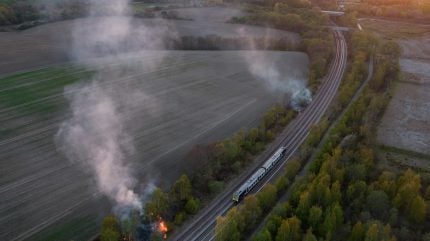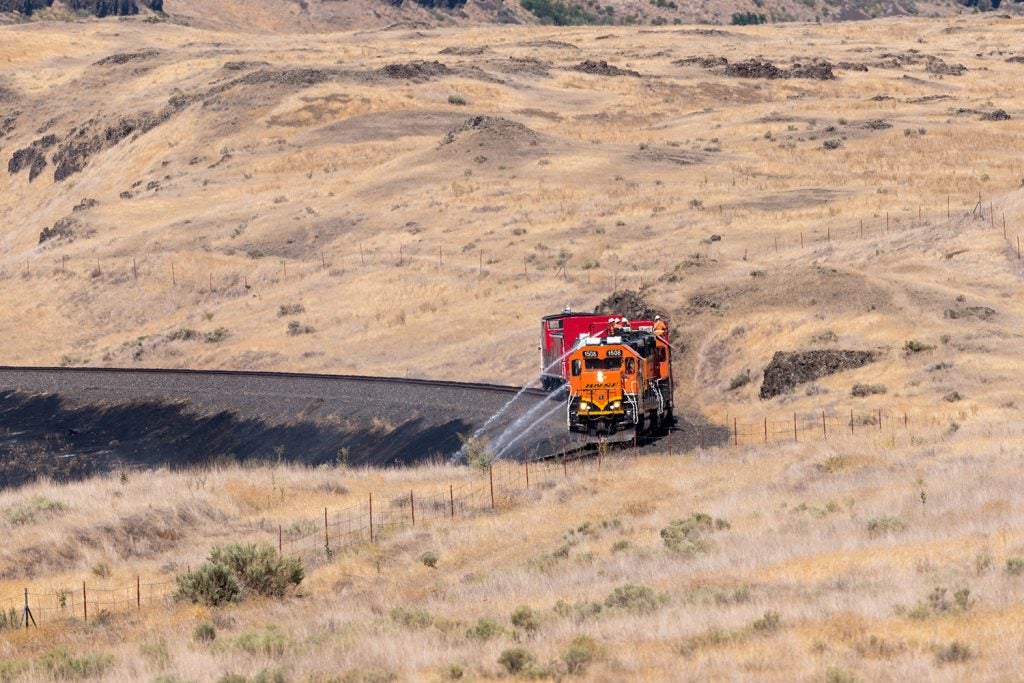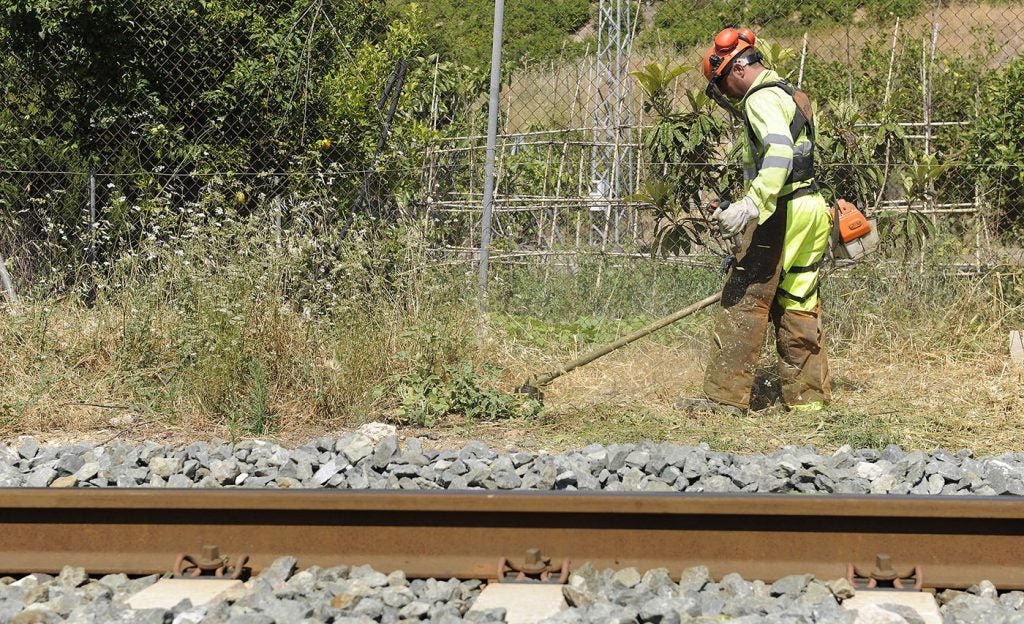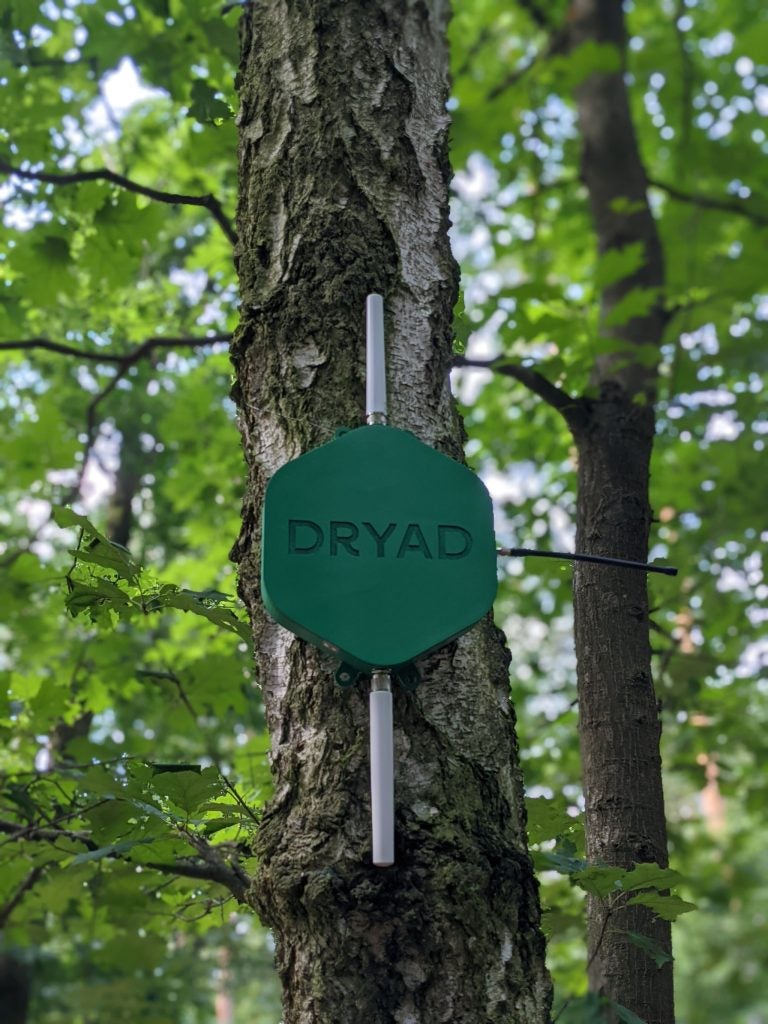
Rail networks are being exposed to an increasing number of extreme weather events. Floods, storms, blizzards, heatwaves, and wildfires continue to beleaguer infrastructure owners and operators alike, causing damage and delays.
Network Rail, for example, reported that weather-related incidents caused over 322,000 delay events totalling 26 million minutes in the UK between 2006 and 2021, which cost train companies over £1bn in compensation payments.

Discover B2B Marketing That Performs
Combine business intelligence and editorial excellence to reach engaged professionals across 36 leading media platforms.
Then in Canada, recent heatwaves and wildfires have forced trains to run slower, contributing to a cut in Canadian National Railway’s (CN) earnings outlook and a 26% revenue reduction.
With extreme weather events forecast to increase over the coming years, the industry is unsurprisingly focusing on building resilience.
Improving resilience
Guy Huckle, resilience and security expert at UK management consulting company PA Consulting, points to initiatives like the Rail Resilience Project (RRP) and the Rail Severe Weather Taskforce.
The former is a cross-industry programme developing a code of practice and supporting guidance to deliver improvements in emergency planning and preparedness and response recovery, while the latter has delivered improvements in severe weather monitoring, including new tools that provide early warning of extreme rainfall.

US Tariffs are shifting - will you react or anticipate?
Don’t let policy changes catch you off guard. Stay proactive with real-time data and expert analysis.
By GlobalDataInfrastructure owners are continuing to strengthen existing networks, while “new rail infrastructure is being constructed to standards that consider the future impact of climate change,” Huckle notes.
New rail infrastructure is being constructed to standards that consider the future impact of climate change.
Transport Canada’s Rail Climate Change Adaption Program (R-CCAP) was created to help the country’s rail sector research, develop and implement new technologies and processes to address growing risks, approving funding of $5.4m to fund 20 projects across fiscal years 2022/2023 and 2023/2024.
But while funds are being put towards climate mitigation – Spanish state-owned railway infrastructure manager, Adif, allocated almost €25m to fire prevention in 2021 – much more will be needed going forward.
To support this, Ben Chursinoff, manager of policy, environment and programs at the Railway Association of Canada (RAC) believes that: “We need governments to create a supportive policy and regulatory environment to enable continued and growing private sector investments.”
Growing threat of wildfires
Wildfires have been one of the most common and headline-making extreme weather events recently, with record-breaking wildfires across Canada in addition to large wildfires in Greece, Italy, Spain and Russia.
Risks to rail networks include track damage in the form of ‘heat kink’, which can lead to rolling stock damage and derailments, power and communication disruption, and destabilisation of track beds caused by an increase in soil erosion.
In Canada, new rules were put into place last year requiring railways to commit additional capacity to detect, monitor and suppress fires during fire season, which runs from April to October, and work continues – globally – to improve prevention, monitoring and management of wildfires.
Fire trains continue to be a key tool in railways’ arsenals, especially in North America, where we saw the rollout of CN’s Poseidon fire train in Alberta this May.

These specialised vehicles carry thousands of gallons of water alongside other firefighting equipment such as aqueous firefighting foam, water cannons and generators.
“Train crews operate fire trains equipped with modified tank cars with pump systems to address fires directly from the tracks. Fire bladders and sprinkler systems are deployed as needed, and water and fire retardant are sprayed, especially on bridges, to reduce the chance of them catching fire,” explains Kent.
“Tank cars are also strategically staged and act as fire hydrants and generators placed near our telecommunications systems in anticipation of power outages.”
Other practices, such as implementing predictive modelling and enhanced monitoring, are used in the sector’s fight against wildfires, but the sector is also looking at new solutions to mitigate the effects of extreme weather.
Technology to the rescue?
Adif, for example, has developed a calculation tool that predicts which areas are at high risk of track deformation due to lateral buckling caused by extreme temperatures.
“We can then impose temporary speed limits in these sections,” says an Adif spokesperson. “This tool is already operational, but we’re focusing on improving its accuracy and useability.”
Focusing again on wildfires, LiveEO’s Vegetation Management insights (VMi) solution is another solution of interest to the rail sector.

This solution uses satellite imagery and artificial intelligence (AI) to monitor vegetation density and proximity to tracks, which is crucial for wildfire prevention as it enables proactive vegetation management measures such as clearing or trimming.
“It can also assess the vitality of vegetation, which helps to identify areas of high risk where dry and combustible vegetation could pose a threat,” explains LiveEO product manager Eve Egdmann.
The company is also developing a firebreak feature for VMi, which will facilitate mapping and monitoring potential firebreaks to help contain fires.
Also piquing interest is Dryad Network’s solar-powered sensor network, which can detect and warn of wildfires within minutes, enabling them to be extinguished before there’s time to spread.

The robust sensors, which are designed to work in harsh environments for more than 10 years, are designed to measure temperature, humidity, air pressure and smoke levels, and transmit the data via a long-range, low-power IoT network (LoRaWAN) to a cloud-based platform. This uses AI to analyse data and detect anomalies that indicate a fire risk.
“They work like an electronic nose,” explains company co-founder and CEO Carsten Brinkshulte, “analysing the air’s gas composition and looking for hydrogen, carbon monoxide and volatile organic compounds. They then use built-in machine learning to decide whether a pattern of gas is likely to be a fire.”
Dryad Networks recently completed two proof-of-concept tests with a Canadian railway; the first being a fire on a mock bridge and the second along a track. Both saw the network detecting the fire within 12 minutes.
“Now we’re going into pilots with them. Assuming these go well, the company is looking to use our sensors to protect many of their high-value assets,” he concludes.





